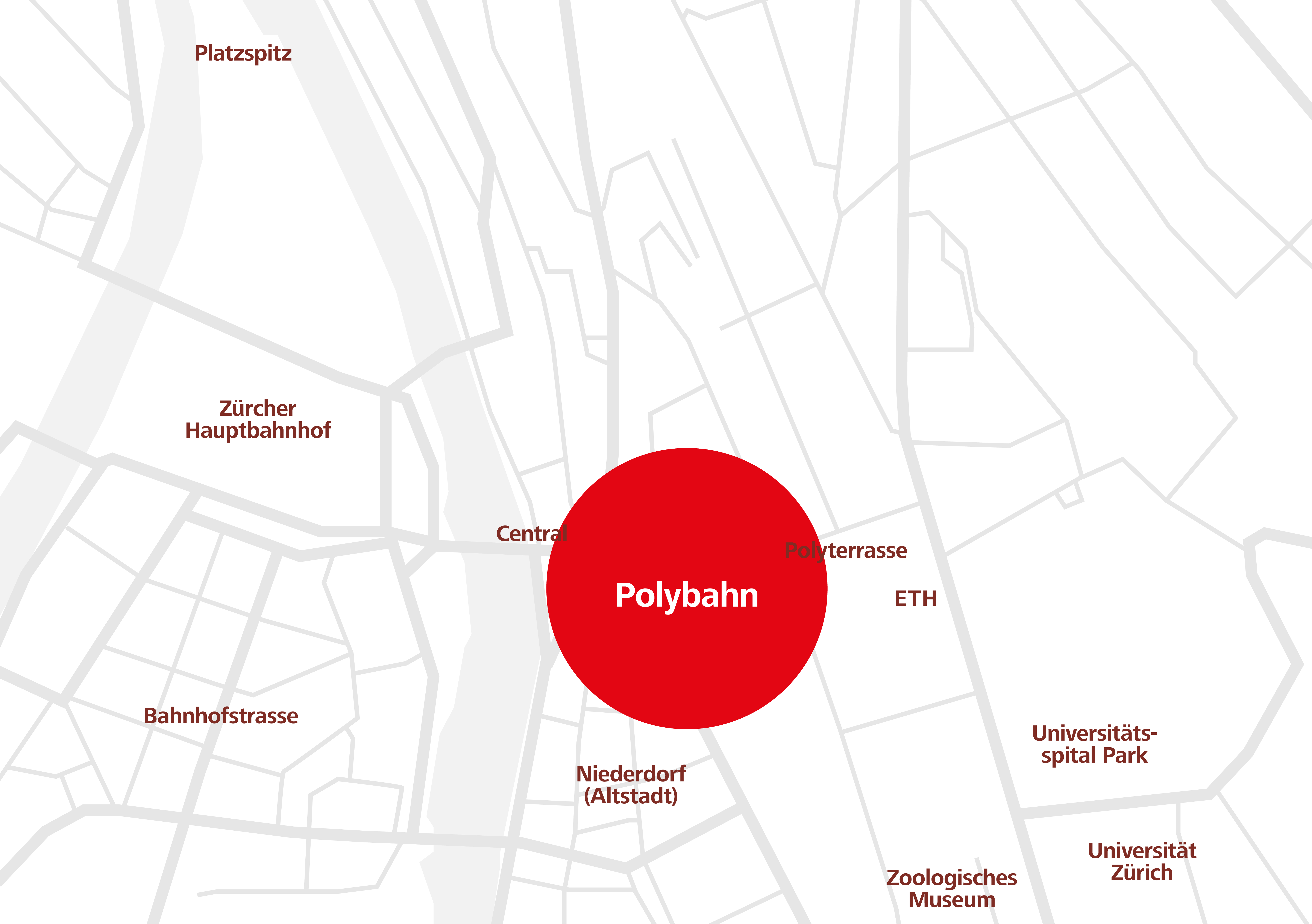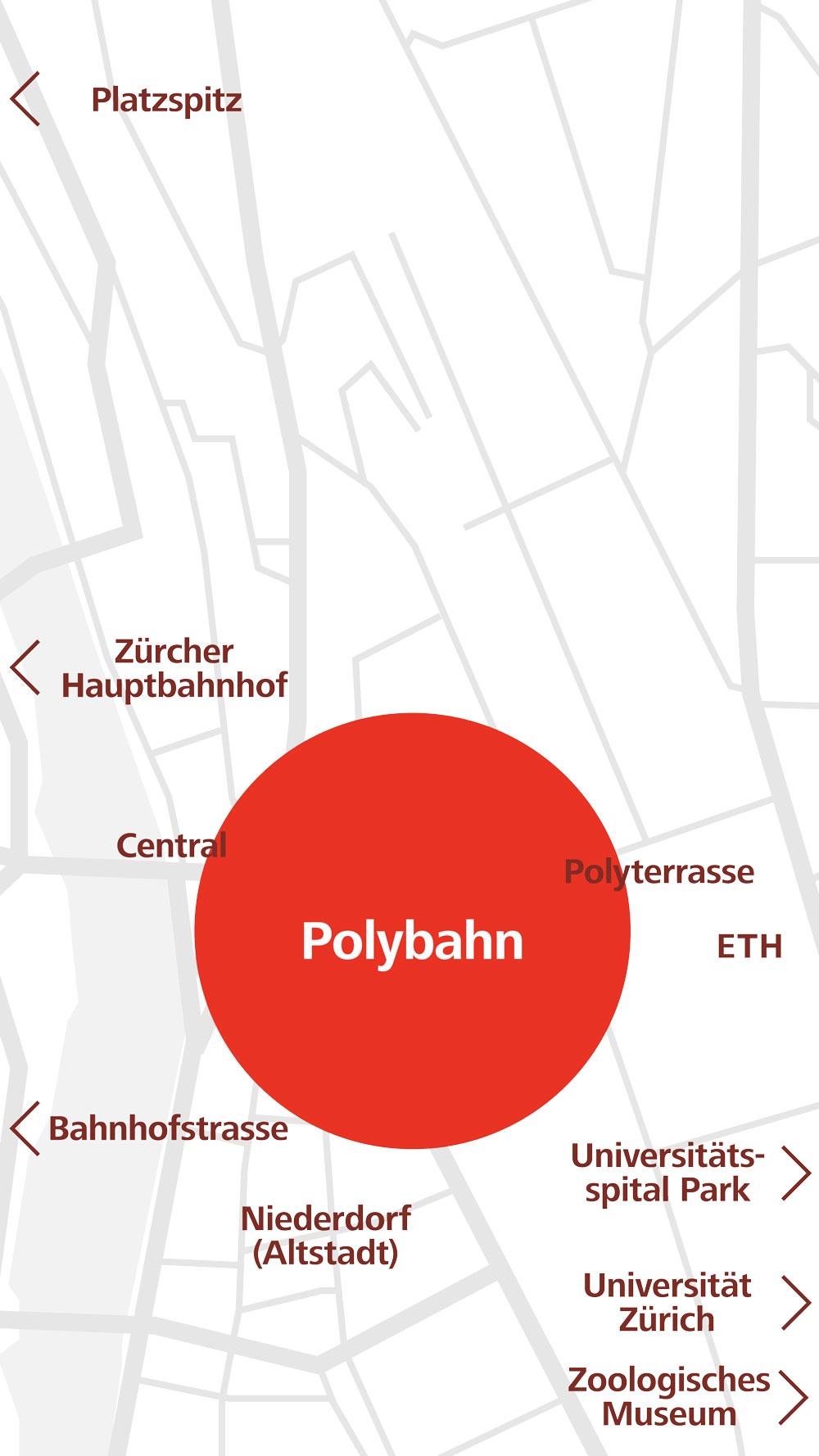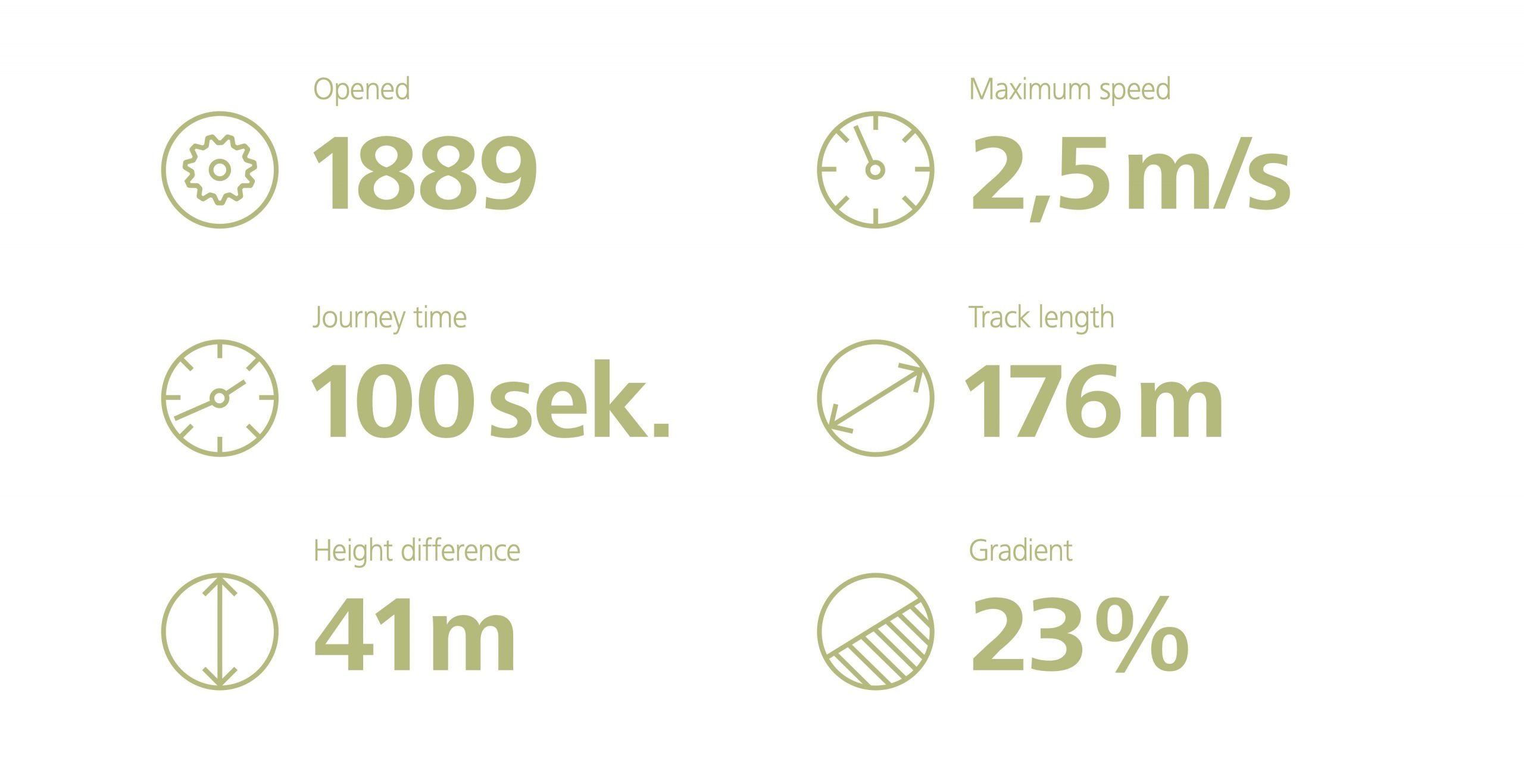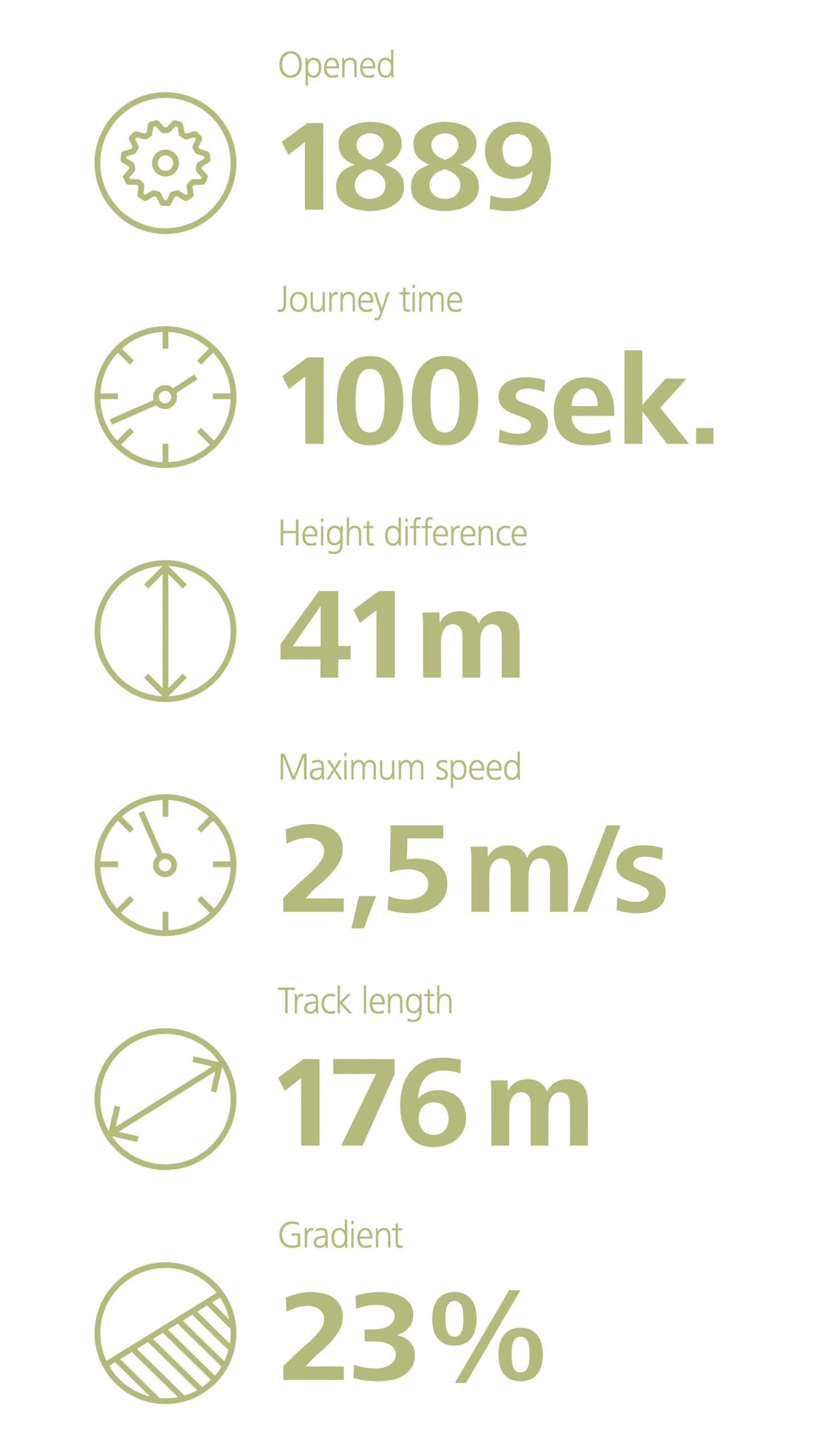Next departure
Don’t worry, the next Polybahn will be here in less than 4 minutes.
Supported by UBS
The Zurich Polybahn is more than a symbol of nostalgia. Every year, the UBS Polybahn transports more than two million people from Zurich Central Square to the ETH Polyterrasse and back again. The funicular railway is part of Zurich’s history. Back when it was in the red and about to be closed down, the former Union Bank of Switzerland – now UBS – acquired and refurbished it.
Together with the VBZ and ZVV, UBS has kept the Polybahn going ever since. UBS is committed to preserving culture and traditions like this beloved red Zurich landmark, which has been creating unique experiences for young and old since 1886.
You can find more information here.
Next departure
In 2 to 4 minutes
Supported by UBS
The Zurich Polybahn is more than a symbol of nostalgia. Every year, the UBS Polybahn transports more than two million people from Zurich Central Square to the ETH Polyterrasse and back again. The funicular railway is part of Zurich’s history. Back when it was in the red and about to be closed down, the former Union Bank of Switzerland – now UBS – acquired and refurbished it.
Together with the VBZ and ZVV, UBS has kept the Polybahn going ever since. UBS is committed to preserving culture and traditions like this beloved red Zurich landmark, which has been creating unique experiences for young and old since 1886.
You can find more information here.








